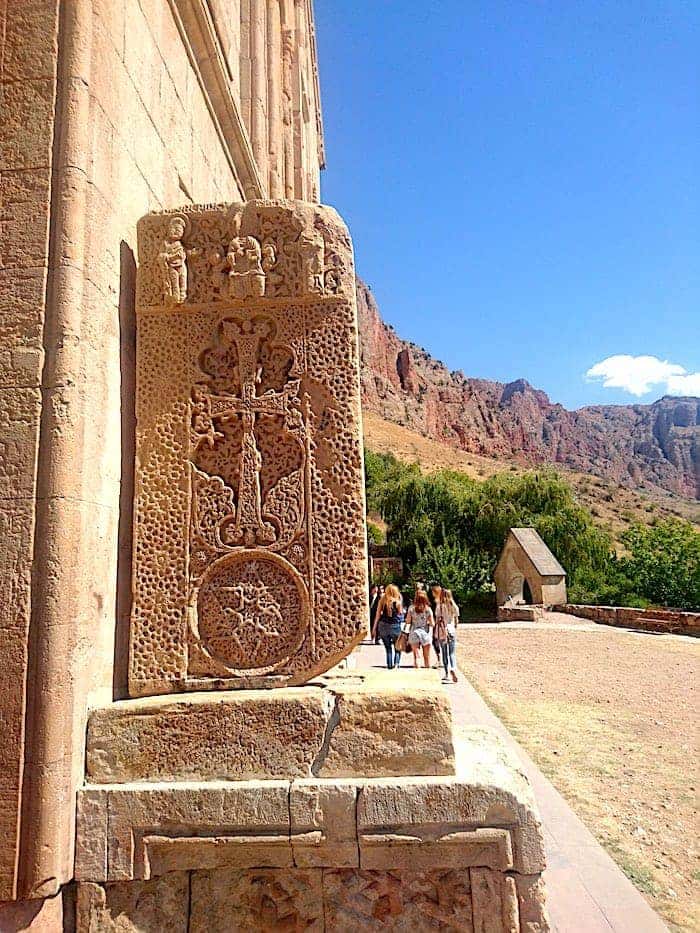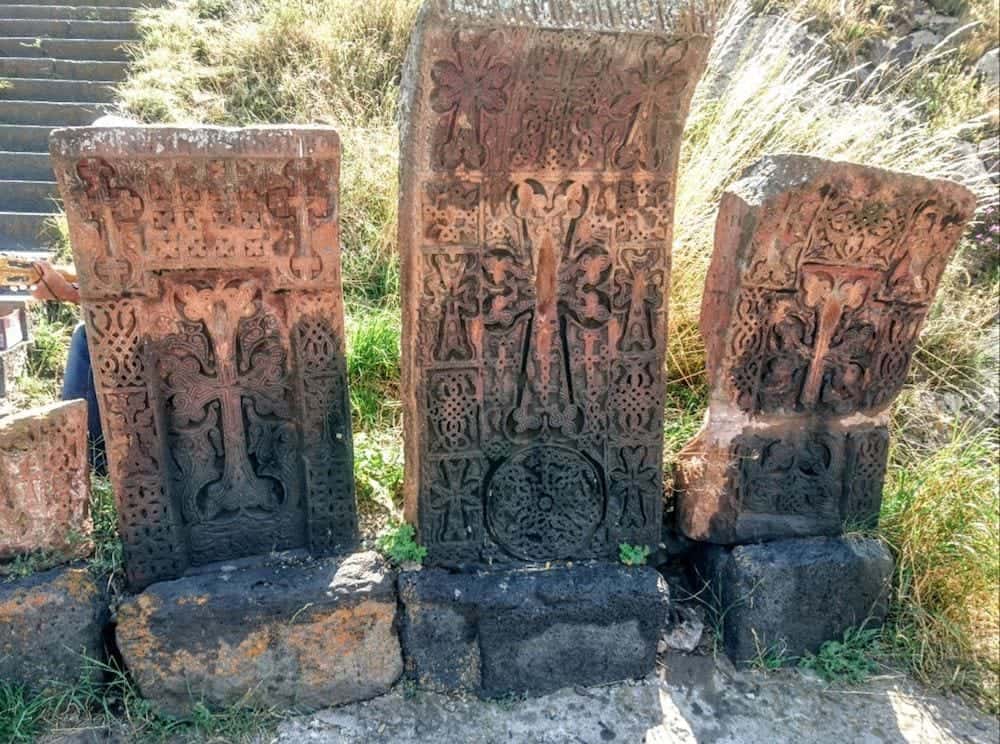Хачкары, или хачкары, представляют собой уникальную форму средневекового армянского искусства, тщательно изготовленную из камня в память о религиозных или исторических событиях или в качестве надгробий. Этот традиционный вид искусства передавался из поколения в поколение, и лишь несколько опытных скульпторов продолжают это ремесло в наше время. Некоторые хачкары даже раскрашивали в яркие цвета, что добавляло им визуальной привлекательности.
Самый ранний хачкар
Самый ранний известный хачкар, посвященный царице Катраниде, датируется 879 годом нашей эры и в настоящее время находится в Гарни. Этот ранний пример демонстрирует сложные детали и символику, которые стали отличительными чертами хачкаров.
Виды хачкаров
В XI и XII веках хачкары достигли зрелого состояния, появились различные типы:
- Цельные хачкары с плоской или арочной верхушкой, часто вкопанные в землю.
- Более сложные конструкции с хачкарами, вставленными в выдолбленные и отполированные скалы или памятники, преобладали с 11 по 14 века.
- «Карниз-хачкары», где верхняя часть концептуально отличалась от нижней, символизируя переход от бренной жизни к небесной сфере.
- Групповые хачкары, появившиеся в XII веке, представляют собой несколько хачкаров на общем или индивидуальном постаменте.
Символизм в хачкарах
На хачкарах часто изображают птиц, каждая из которых имеет свое символическое значение:
- Птицы внизу олицетворяют земную жизнь.
- Птицы среднего яруса символизируют переход в небесное царство.
- На вершине, или карнизе, изображены парящие птицы, символизирующие небесное царство.
Это иерархическое изображение птиц отражает средневековое армянское мировоззрение, где крест служит посредником между земным и небесным царствами.
Подводя итог, можно сказать, что хачкары – это не просто декоративные предметы; они являются свидетельством богатого культурного наследия и духовных верований Армении. Каждый камень рассказывает историю, сохраняя память о значимых событиях и личностях. Будучи вневременным видом искусства, хачкары продолжают вызывать трепет и почтение, служа мостом между прошлым и настоящим.



Добавить комментарий